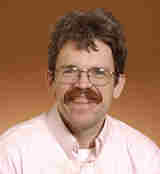Biography
 Michael E. McHenry is Professor of Materials Science and Eng. (MSE), with an appointment in Physics at Carnegie Mellon. He graduated with a B.S. in Metallurgical Eng. and Materials Science from Case Western Reserve in 1980. From 1980 to 1983 he was employed as Process Engineer at the U.S. Steel Lorain Works. In 1988 he earned a Ph.D in Materials Science and Eng. from MIT. He was a Director's Funded Post-doctoral Fellow at Los Alamos Lab from 1988 to 1989. He has expertise in the area of nanocrystalline magnetic materials including soft magnetic nanocomposites, faceted ferrite nanoparticles and materials for power conversion, biomedical, energy and data storage applications. His research involves rapid solidification processing, plasma and solution synthesis of nanoparticles, magnetic field of processing materials, structural characterization by x-rays and electron microscopy and magnetic properties characterization as a function of field, temperature and frequency. He directed a Multidisciplinary University Research Initiative (MURI) on high temperature magnetic materials for aircraft power applications and currently leads an ARPA-E program in magnetic materials for power electronics. He has served as proceeding Editor, Publication Chair and a member of the Program Committee for the Magnetism and Magnetic Materials (MMM) and Intermag Conferences. He has published over 250 papers and owns two patents in the field. He has co-authored, with Marc DeGraef, the textbook “Structure of Materials”, Cambridge University Press, 2007.
Michael E. McHenry is Professor of Materials Science and Eng. (MSE), with an appointment in Physics at Carnegie Mellon. He graduated with a B.S. in Metallurgical Eng. and Materials Science from Case Western Reserve in 1980. From 1980 to 1983 he was employed as Process Engineer at the U.S. Steel Lorain Works. In 1988 he earned a Ph.D in Materials Science and Eng. from MIT. He was a Director's Funded Post-doctoral Fellow at Los Alamos Lab from 1988 to 1989. He has expertise in the area of nanocrystalline magnetic materials including soft magnetic nanocomposites, faceted ferrite nanoparticles and materials for power conversion, biomedical, energy and data storage applications. His research involves rapid solidification processing, plasma and solution synthesis of nanoparticles, magnetic field of processing materials, structural characterization by x-rays and electron microscopy and magnetic properties characterization as a function of field, temperature and frequency. He directed a Multidisciplinary University Research Initiative (MURI) on high temperature magnetic materials for aircraft power applications and currently leads an ARPA-E program in magnetic materials for power electronics. He has served as proceeding Editor, Publication Chair and a member of the Program Committee for the Magnetism and Magnetic Materials (MMM) and Intermag Conferences. He has published over 250 papers and owns two patents in the field. He has co-authored, with Marc DeGraef, the textbook “Structure of Materials”, Cambridge University Press, 2007.
|


![]()
